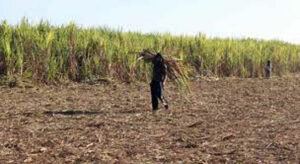THE proposed delay of the start of sugar milling season to October could result in lower yields and lower income for farm laborers, a planters’ association official said.
“Canes need to be harvested when they are ripe, which means when they reach their maximum level of sugar content. When canes are overripe, they have less sugar content, which translates to less sugar production,” Mark S. Ureta, executive director of the Confederation of Sugarcane Farmers told BusinessWorld in an e-mail.
Mr. Ureta noted that the two-month delay would hold up “transforming canes into income for all farmers” which could also lead to decrease in sugar production.
“Small planters and (agrarian reform beneficiaries), who comprise more than 90% of the producers, cannot afford to delay their harvest; they cannot suspend the grumbling of empty stomachs,” he said.
At a public briefing last week, Pablo Luis S. Azcona, board member and planter’s representative to the Sugar Regulatory Administration (SRA), said the move to an October start restores the “proper date” for embarking on milling, which will boost local sugar production.
According to Mr. Ureta, “this has not happened in our history,” but added that the SRA could implement such a plan by not issuing milling permits until October.
He also noted that one of the challenges during the milling season was the scarcity of labor. A prolonged “tiempo muerto,” as the offseason is known in sugar country, means sugar farms “might find themselves with a fewer workers” as they seek other employment opportunities.
He said the proposed transition should be coordinated properly “to minimize the unforeseen challenges” for the most vulnerable members of the industry.
“The bigger question now is, ‘Can SRA lead this adjustment and can the farmers adapt effectively?’ Most of the planters at this time are not ready for this immediate transition,” Mr. Ureta said.
“The proposed adjustments in milling schedule need to be studied carefully first with a consultation (through) the Stakeholders Consultative Assembly. If it pushes through, the transition should be done gradually to minimize the effect on the stakeholders, particularly marginal farmers,” he added.
The milling season usually starts during the last week of August and ends between April and May. The peak harvest season varies from area but tends to occur in the earlier months of the year.
Citing SRA data, Mr. Ureta said the agency’s estimated preliminary production for crop year 2022-2023 was close to his organization’s estimates of around 1.83 million metric tons (MT) of raw sugar.
The projection was 1.87 million MT in September. According to Mr. Ureta, the downgrade in forecast was primarily driven by the weather.
“Too much rain, which we have been experiencing since December, reduces the sugar content of canes, and the resulting muddy fields make it more difficult to harvest the canes,” he said. — Sheldeen Joy Talavera
